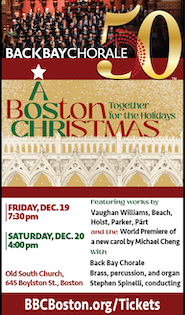Boston Philharmonic opens with epic works by Holst and Strauss

Benjamin Zander conducted the Boston Philharmonic’s opening concert Thursday night at Symphony Hall.
Conductor Benjamin Zander has a fine ear for some of the grandest works in the symphonic repertoire, having led the Boston Philharmonic in symphonies by Mahler, Rachmaninoff, Bruckner, and Sibelius over the past several seasons. Zander continued this tradition Thursday night at Symphony Hall by leading bracing accounts of sonorous works by Richard Strauss and Gustav Holst.
Though not known for adventurous programing or contemporary music, the Boston Philharmonic shows itself to be an ensemble on the move. Concerts in the past few years have revealed highly polished playing from the orchestra and nuanced interpretations that have shed new light on beloved works. Bold and powerful, Thursday night’s concert proved a solid opening to the new season.
The Planets, the chief offering of the evening, remains one of Holst’s most popular works and it’s easy to hear why. The seven-movement suite is a powerhouse of orchestral writing, replete with stirring melodies and colorful instrumental effects.
Having studied with Holst’s daughter, Imogen, in his youth, Zander may have more familiarity with this score than most. His approach to the music is multifaceted. From the podium, he led with deliberate gestures, oftentimes doing little more than keeping time. But he keeps a close ear to the musical phrase. Entrances were handled clearly, crescendos sculpted and shaped in flowing arcs. Tempos were tight, even fleet.
That was most evident in Mercury, which moved with sprightly energy. Zander also kept a quick pace for Jupiter, yet his reading still managed to bring out the nuances of Holst’s wind and string writing. The mid-movement hymn glowed, and the quicksilver passages sparked to life thanks to solid contributions from trumpets and horns.
The rest of the movements fared just as well. Saturn was appropriately world-weary, the phrases building gradually into sturdy blocks of sound. Uranus bounced with quirky humor. Mars was ominous and malignant, with Zander drawing out the concluding bars note by note for dramatic effect.
But the gem of this setting was Neptune, the final movement, which bristled with glassy dissonances. The women of the Radcliffe Choral Society, prepared by Andrew Clark, added wistful threads of harmony in the closing measures, where two chords oscillate and gradually fade like dying light.
The opener, Strauss’ Also sprach Zarathustra, has one of the most recognizable openings and most enigmatic endings in symphonic literature, and critics and scholars still can’t seem to agree on what exactly Strauss was trying to say with this symphonic poem.
Zander’s conception, though, was clear from the beginning as he shaped the multi-sectional piece in a single dramatic arch. The opening notes seemed to grow out of primordial depths. Zander opted for a quicker pace than is usually experienced in the famous opening of this piece, and he did not linger on the pronounced trumpet calls and timpani strokes. The ensuing string hymn, however, sounded beautiful in Zander’s spacious tempo as the conductor took time to sculpt the phrases into grand arcs.
Elsewhere, the musicians of the Boston Philharmonic answered Zander’s gestures with delicate balance. “Of Great Longing” swelled to phrases of Wagnerian grandeur, and solo trumpet and English horn punctuated the texture with the familiar C-G-C motive (Strauss’ musical reference for implacable nature or the Nietzschean Übermensch, depending on the interpretation).
The conductor kept a light foot on the throttle for the waltzing movement, and the orchestra answered with fine playing. Concertmaster Joanna Kurkowicz supplied deft and sunlit solo passages.
Excellent as this reading was, one at times wanted more weight from the musicians, especially in “The Convalescent.” Many interpretations of this section call for blazing brass lines from the opening bars. Zander, instead, built the phrases steadily as if it were a long crescendo. But it didn’t go far enough. The chord that falls in the middle of this section lacked the requisite earthshaking power.
Zander saved the most powerful forces for the concluding moments of “The Dancing Song” to portray, as he noted in his remarks on the piece, the unquenchable human spirit. The musicians answered with playing of bold precision as if to put an early exclamation point on Strauss’ piece before venturing into the work’s nebulous ending.
The program will not be repeated. Benjamin Zander will lead the Boston Philharmonic Youth Orchestra in works by Glinka, Debussy, Tchaikovsky, and Stravinsky, with violinist Ayano Ninomiya as soloist 7:30 p.m. November 2 at Symphony Hall. bostonphil.org.
Posted in Performances
